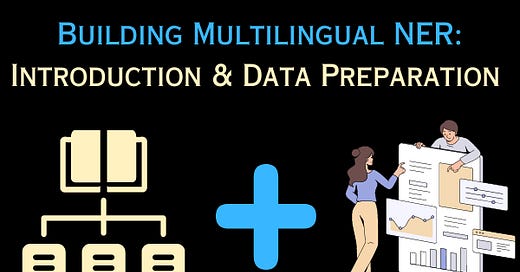Multilingual Named Entity Recognition (NER) is crucial for analyzing unstructured text in different languages, supporting tasks like machine translation and information extraction.
In this blog, we introduce the basics of multilingual NER, discuss the challenges of working with various languages, and compare two main approaches: language-specific and multilingual models. Using real-world examples and transformer-based models like XLM-R, we demonstrate how NER works across languages. The blog also covers data preparation using the WikiANN (PAN-X) dataset, with a focus on creating a multilingual corpus.
We explore techniques for balancing the dataset and preparing it for NER tasks while ensuring the model can handle all languages effectively. This sets up a practical guide for building NER systems that work across diverse languages.
My New E-Book: Prompt Engineering Best Practices for Instruction-Tuned LLM
I am happy to announce that I have published a new ebook Prompt Engineering Best Practices for Instruction-Tuned LLM. Prompt Engineering Best Practices for Instruction-Tuned LLM is a comprehensive guide designed to equip readers with the essential knowledge and tools to master the fine-tuning and prompt engineering of large language models (LLMs). The book covers everything from foundational concepts to advanced applications, making it an invaluable resource for anyone interested in leveraging the full potential of instruction-tuned models.
1. Introduction to Multilingual Named Entity Recognition (NER)
Multilingual Named Entity Recognition (NER) is the process of identifying and classifying named entities (such as persons, organizations, locations, dates, and other proper nouns) in texts written in multiple languages. NER is a critical task in natural language processing (NLP) because it helps extract meaningful information from unstructured text, enabling applications like machine translation, information retrieval, and question-answering systems.
In multilingual NER, the challenge is to develop models that can handle diverse linguistic features, such as grammar, syntax, morphology, and varying entity representations across languages. There are two main approaches:
Language-specific NER Models: Separate NER models are built for each language. This allows for fine-tuning based on the specific characteristics of a language but requires a lot of resources and labeled data for each language.
Multilingual NER Models: A single model is trained on data from multiple languages, often leveraging shared linguistic features. These models can generalize better across languages and require fewer resources but may struggle with languages that have significant linguistic differences.
An example of Multilingual Named Entity Recognition (NER) would be using a transformer-based model, like XLM-R (XLM-RoBERTa), to identify named entities across multiple languages. Here’s a breakdown of how it works with an example:
Text Samples in Different Languages:
English:
“Elon Musk is the CEO of SpaceX, which is based in Hawthorne, California.”French:
“Emmanuel Macron est le président de la France.”Arabic:
“محمد صلاح لاعب في نادي ليفربول.”
Multilingual NER Output:
For the English sentence:
Elon Musk → Person
SpaceX → Organization
Hawthorne → Location
California → LocationFor the French sentence:
Emmanuel Macron → Person
France → LocationFor the Arabic sentence:
محمد صلاح (Mohamed Salah) → Person
نادي ليفربول (Liverpool FC) → Organization






